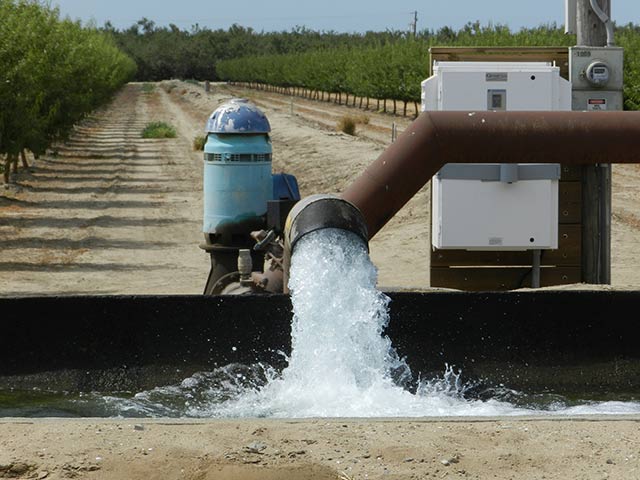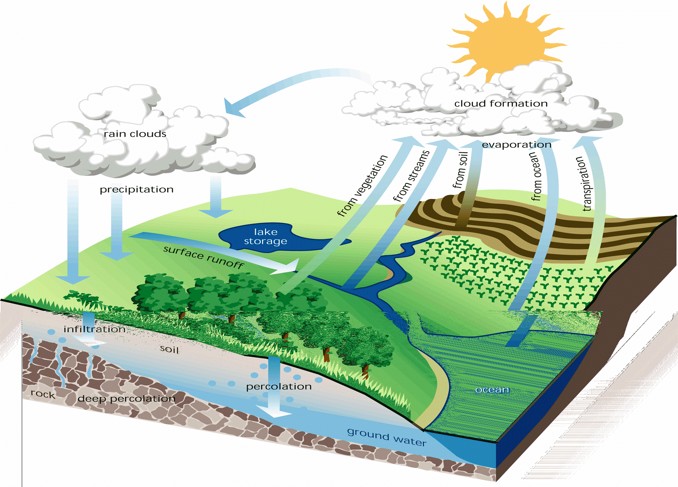October 28, 2016
Topic
Safe, clean water is essential to California, its nearly 39 million residents, its vibrant and diverse economy, and its cherished quality of life. However, the supply of accessible, affordable clean water in adequate and sustainable amounts to meet California’s needs is limited and relatively finite.

It is becoming increasingly evident to policymakers that to accommodate the often-competing needs of various end-users, while providing for continued demographic and economic growth, requires careful, forward-thinking management of California’s water resources.
Groundwater provides a significant portion of California’s water supply. More than one-third of the water used by Californians in an average year – and more than one-half of the water used by Californians in a drought year when other sources are unavailable. California’s long-term drought has exacerbated the impacts from extracting excessive amounts of groundwater, causing overdraft, failed wells, deteriorated water quality, environmental damage and irreversible land subsidence that damages infrastructure and diminishes the capacity of aquifers to store water for the future.
State legislators recognized this challenge, and passed the Sustainable Groundwater Management Act (SGMA) in 2014 – requiring comprehensive and sustainable management of California’s critical groundwater resources.
Moving forward, successful implementation of SGMA will require strong partnerships between water agencies and local government who can set land-use policies that protect and maximize local water resources, reduce the cost of stormwater permits, lessen the possibility of fines for violating water-quality standards, and limit flooding impacts on rapidly developing floodplains.
Forward-thinking communities understand that their land-use decisions seriously impact water resources and will determine whether they can meet demands for water now and in the future. Our land-use decisions – both current implementation and long-term planning – impact groundwater supply and quality. The consequences of those choices are amplified by continued population growth and sprawl development.
Sustainable Groundwater Management Act
In September 2014, Governor Brown signed the Sustainable Groundwater Management Act – historic legislation requiring, for the first time, comprehensive and sustainable management of California’s critical groundwater resources. The Act requires the formation of local “Groundwater Sustainability Agencies” (GSAs) charged with preparing “Groundwater Sustainability Plans.” The new law seeks to ensure our precious groundwater supplies are sustainable for the long term.

New Groundwater Sustainability Agencies are forming – now is the time for land-use planning agencies to engage water agencies and work together to prepare a Groundwater Sustainability Plan that ensures local water and land-use decisions are aligned.
SGMA outlines requirements for land-use agencies to participate in groundwater management. Local governments have an opportunity to promote sound water stewardship in their land-use planning and, conversely, sound land-use planning in their water management.
Most groundwater basins are shared by multiple overlying jurisdictions. All of these jurisdictions will be impacted by the GSA’s decisions, and it is imperative that each jurisdiction participates in the process. Ideally, everybody sharing the same aquifer – cities, counties, water agencies, Tribes and special districts – will work together to jointly produce their Groundwater Sustainability Plan.
SGMA delineates a minimum set of requirements (Government Code 65350.5) for GSAs to coordinate with land-use agencies to ensure that the land-use and groundwater management goals continue to align. Land-use agencies must also uphold sustainable groundwater management responsibilities. In essence, these requirements elevate the Groundwater Sustainability Plan to function as a planning document.
Under SGMA, land-use planning agencies must notify GSAs of any proposal to substantially amend a general plan, and must review and consider any adopted groundwater plan (including GSA comments) when amending their general plan.
The way we plan, grow and develop directly and indirectly influences the quality and availability of our groundwater supply. As long as issues related to depleting groundwater continue to be more than just an environmental problem, and increasingly impact community, transportation and land-use issues, local governments will play a role in planning and implementing decisions about sustainable groundwater management.
What Your Jurisdiction Can Do
Develop New Partnerships
SGMA recognizes that a well-rounded, multifaceted understanding of groundwater develops effective management solutions. Local and regional governments represent a wealth of land-use planning knowledge and can develop stronger partnerships by:
- Creating a groundwater task group within your City or County. Bring together your staff from planning, public works, the agricultural commissioner’s office, public health, environmental management, parks and recreation, transportation, water resources, and any other relevant department. Together, review the legislation from the context of your internal expertise. Then, identify how SGMA affects your jurisdiction, and how it can be used as an opportunity to improve your planning processes.
- Thinking regionally. Meet with other agencies and community groups, including Integrated Regional Water Management (IRWM) groups, watershed groups, regional collaborative, LAFCOs, COGs, MPOs, Regional Climate Change/Adaptation Collaborative, community stakeholder groups, Tribes and other organizations that are relevant partners for achieving groundwater sustainability in your region. Creating a regional partnership can help identify common ground and overcome boundaries in addressing the complex, interconnected problems associated with groundwater management.
Decrease the Demand for Water:
- Actively implement and enforce your City’s Water Efficient Landscape Ordinance (WELO).
- Restrict County Well Drilling Permits for proposed new wells.
- Adopt a progressive budget-based, tiered water rate structure.
- Impose fines for water waste.
- Aggressively seek out and repair leaks in your water delivery system.
- Expand water-use efficiency and landscape-upgrade rebates and other financing programs.
- Recommit to community-based water conservation programs.
Increase Recharge
Identify priority recharge areas and protect those lands (e.g., limit development in recharge areas) by adopting a City/County groundwater code/ordinance (“W” zoning for recharge areas); implementing a stormwater alternative compliance plan to prioritize multi-benefit projects for stormwater capture and percolation (see New Approaches to Stormwater Management); and incorporating groundwater recharge areas in your open-space or working lands ordinance.
You can also develop a Stormwater Resource Plan in coordination with the Groundwater Sustainability Plan, prioritizing stormwater capture for infiltration; identify areas that are not appropriate for recharge, and prioritize infill and new development in those areas; and evaluate alternative water supply available for groundwater recharge.
Plan with Groundwater in Mind
Whatever you do to achieve groundwater sustainability – Plan with groundwater in mind. Aligning the many land-use and water management planning documents is in everyone’s best interest. GSAs are convening to develop yet another document – the Groundwater Sustainability Plan.
Add Water to General Plan Updates
SGMA requires local agencies to “consider” the Groundwater Sustainability Plan whenever making any substantial update or amendment to their general plan. However, GSAs have until January 1, 2020 (for critical basins) or 2022 (for all other high and medium priority basins) to complete their Groundwater Sustainability Plan. Many municipalities will be updating their general plans much sooner, in accordance with the Governor’s Office of Planning and Research update to the General Plan Guidelines.

Now is the time to include water management – especially groundwater – in your general plan and other planning processes. We strongly encourage adding a water element to your general plan, or incorporating water sustainability concepts in each element of your general plan. If you’ve connected with your GSA, then you can include preliminary concepts for a Groundwater Sustainability Plan in your various planning processes.
Integrate Ahwahnee Water Principles
The Ahwahnee Water Principles offer local governments a blueprint for sustainable land-use practices that can improve the reliability and quality of water resources, while reducing some of the financial liabilities that new development places on local governments. Incorporating these principles promote sound water stewardship in land-use and development decisions, particularly for sustainable groundwater management.
The Ahwahnee Water Principles encourage compact, mixed-use designs that limit urban runoff from impervious surfaces, prevent development of open lands and greenfields, and preserve land for recharge and groundwater quality. Low-impact development and drought-tolerant landscaping design standards for new development projects improve our groundwater resources and provides quality of life benefits. These same standards should be applied to redevelopment and retrofit projects.
Resources and Support
Achieving groundwater sustainability through closer coordination between land-use planning and water management will take time, hard work and resources. But help is available.
- The California Department of Water Resources offers technical and financial assistance and guidance in understanding SGMA legislation:
http://www.water.ca.gov/groundwater/casgem/ - Technical assistance from the Governor’s Office of Planning and Research for general plan updates:
https://www.opr.ca.gov/docs/DRAFT_General_Plan_Guidelines_for_public_comment_2015.pdf - Ahwahnee Water Principles Guidebook:
https://www.legacy.civicwell.org/water-guidebook/




